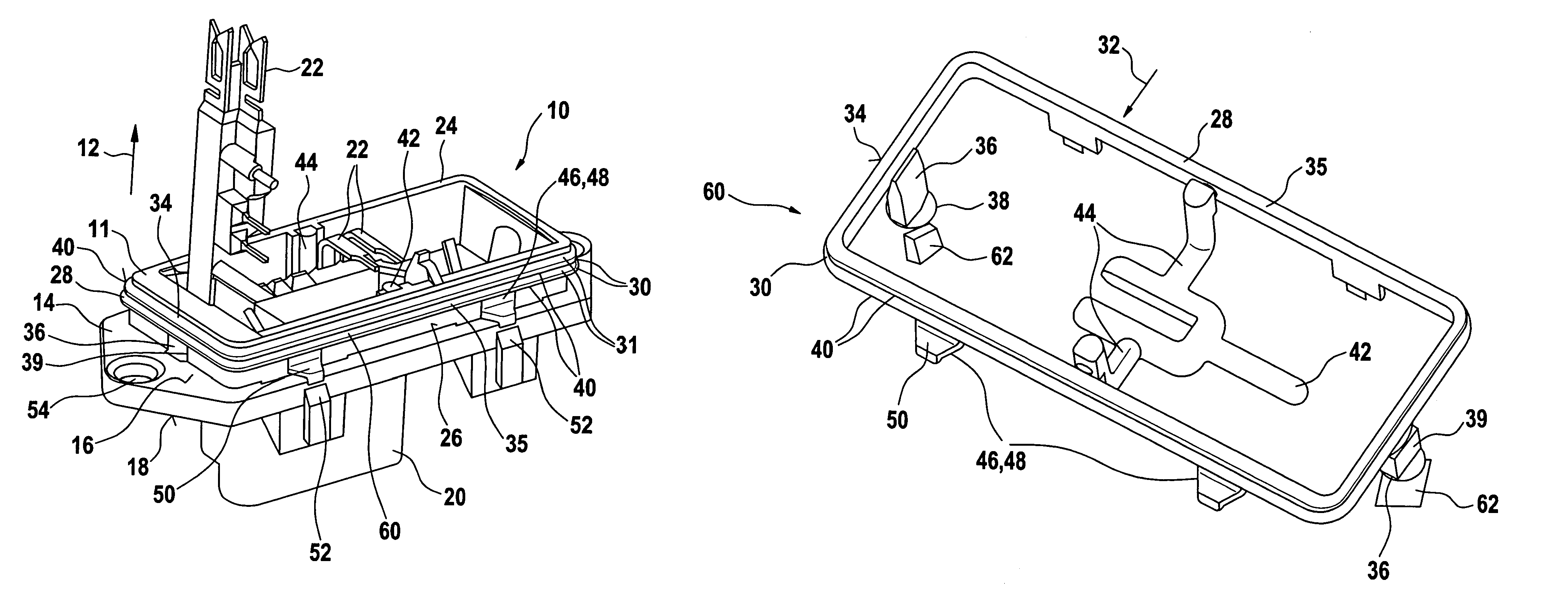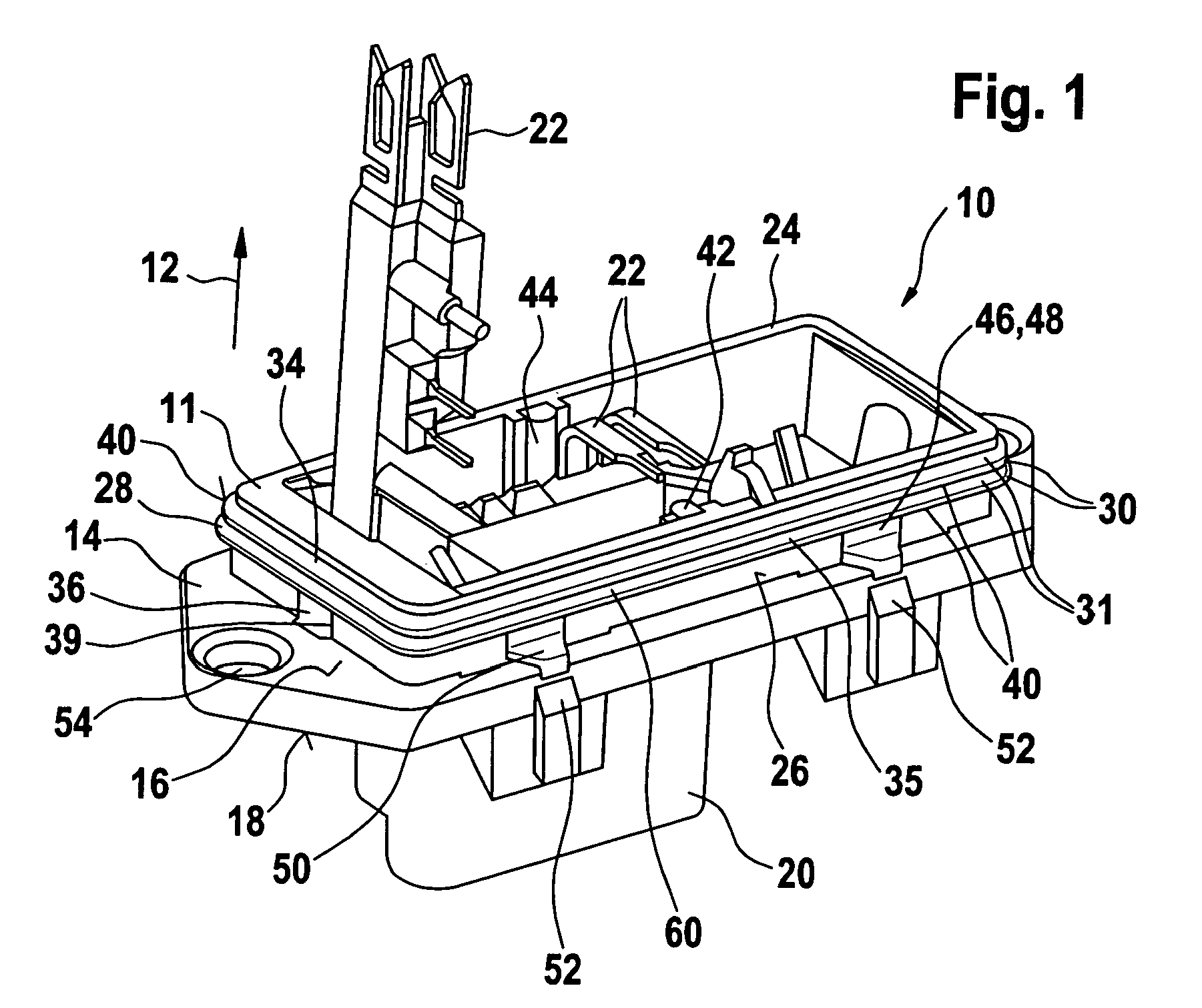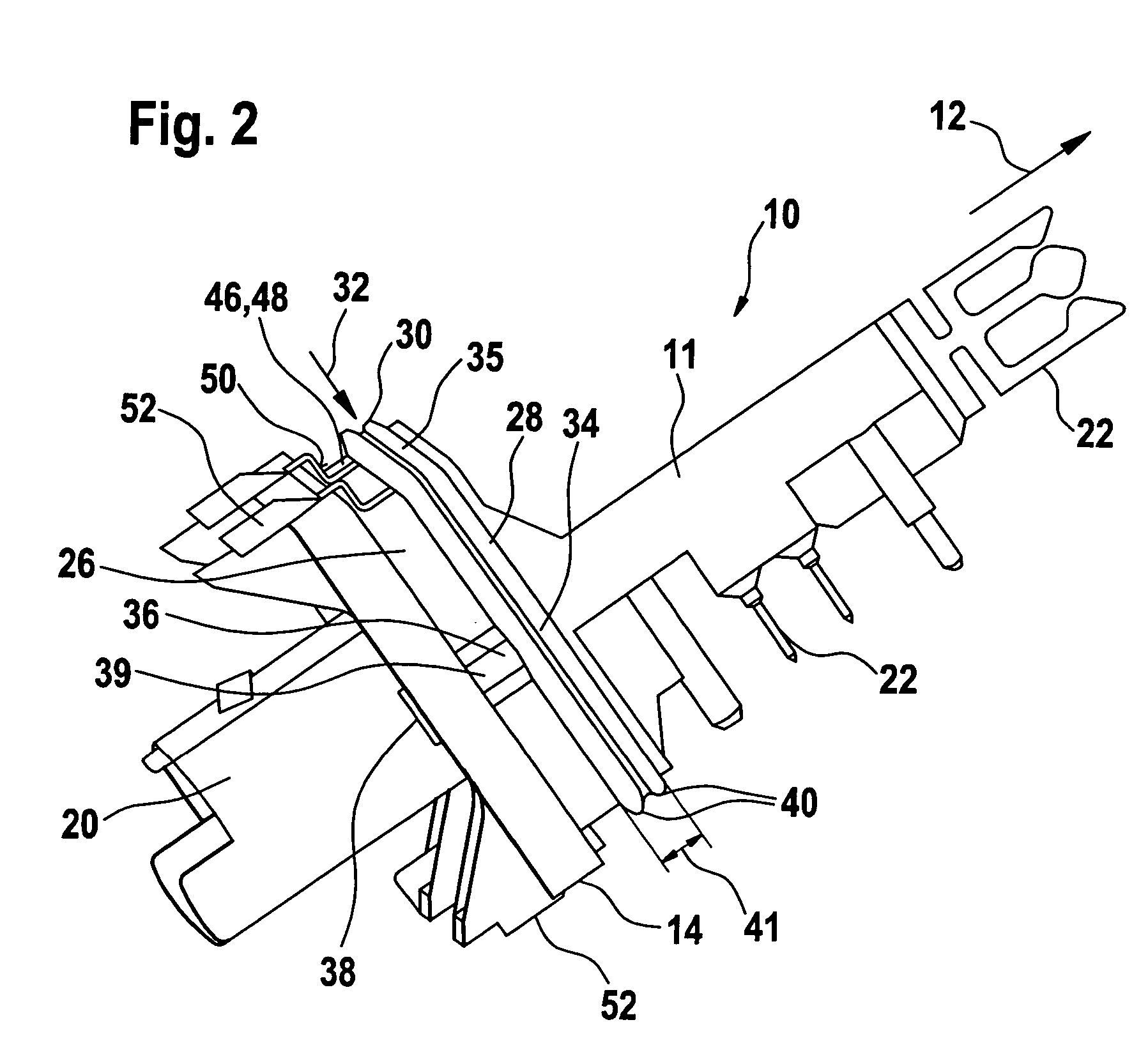Housing part for a drive unit, as well as method and mold for manufacturing same
a technology for housing parts and drive units, which is applied in the direction of electrical apparatus casings/cabinets/drawers, doors, coupling device connections, etc., can solve the problems of reducing the sealing action, affecting the tightness of the housing of such drive units, and reducing the sealing
- Summary
- Abstract
- Description
- Claims
- Application Information
AI Technical Summary
Benefits of technology
Problems solved by technology
Method used
Image
Examples
Embodiment Construction
[0018]FIG. 1 shows a housing part 10, which is suitable for sealing a transmission and / or electronics housing of a drive unit in a watertight fashion. The housing of the drive unit, which is not shown in detail, has, for example, an approximately rectangular opening with a radial side wall into which the housing part 10 is inserted in the axial direction 12 to seal the housing shut. The housing part 10 has a cover element 14 with an inside 16 and an outside 18. For example, the outside 18 has a plug connector20 formed onto it and electrical contacts 22 are routed through the cover element 14 to the inside 16. The inside 16 of the cover element 14 has a circumferential wall 24 formed onto it, with a radial outer surface 26 onto which a circumferential radial seal 28 is molded. The radial seal 28 is approximately rectangular, with rounded radii 30 at the corners in order to seal a corresponding rectangular opening in the housing. For example, the radial seal 28 has two or more sealing...
PUM
| Property | Measurement | Unit |
|---|---|---|
| surface quality | aaaaa | aaaaa |
| elastic | aaaaa | aaaaa |
| volume | aaaaa | aaaaa |
Abstract
Description
Claims
Application Information
 Login to View More
Login to View More - R&D
- Intellectual Property
- Life Sciences
- Materials
- Tech Scout
- Unparalleled Data Quality
- Higher Quality Content
- 60% Fewer Hallucinations
Browse by: Latest US Patents, China's latest patents, Technical Efficacy Thesaurus, Application Domain, Technology Topic, Popular Technical Reports.
© 2025 PatSnap. All rights reserved.Legal|Privacy policy|Modern Slavery Act Transparency Statement|Sitemap|About US| Contact US: help@patsnap.com



